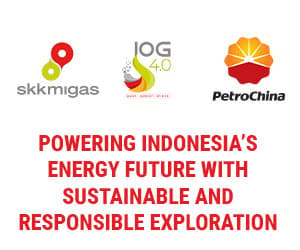An Opinion from Paul Everingham.
It has been an accepted fact for many years now that energy demand from Asia will rise significantly to 2050.
Under high economic growth conditions – a very likely scenario given the number of emerging nations in the region – the US Energy Information Administration has forecast that Asia would use 72 per cent more energy in 2050 than it did in 2024.
What has not been made as clear is the mix of energy sources that Asia is likely to use to make up this growing consumption.
Energy outlooks that “backcast” from emissions reductions targets like net zero, or even less aggressive scenarios, have led to some unrealistic assumptions about how much Asia will be able to rely on renewable energy over the next 30 years. On the flip side, there has been an underestimation of the importance of more traditional fuels like natural gas.
Unfortunately, we saw this reflected in US Government policy in January 2024, with the Biden Administration’s decision to pause processing of liquefied natural gas (LNG) export permit applications.
When the Asia Natural Gas and Energy Association (ANGEA) commissioned Wood Mackenzie to undertake research into Asia’s energy systems through to 2050, it was to help us respond as accurately as possible to a pair of questions that are fundamental to our organisation’s existence (and which we are frequently asked).
How much LNG will Asia need over the next few decades (noting that regional gas resources will not nearly be sufficient to meet demand)?
And what impact will this LNG have on Asia’s emissions profile (noting that gas produces 50% fewer emissions in power generation than coal, which has been setting new usage records each year in Asia)
The simple answer to the first question is “much more than it currently uses.” Wood Mackenzie projects that Asia’s LNG demand will nearly double over the next 25 years, growing from 270 million tonnes per annum in 2024 to 510 million tonnes per annum in 2050.
While LNG will continue to be essential to the energy systems of Japan, South Korea, Taiwan, China and Singapore, the vast majority of the growth from 2030 onwards will come from the fast-growing, highly populous economies of South and Southeast Asia.
This includes India, where LNG is mostly consumed by industry, and Pakistan, and Bangladesh, where gas has been a major source of power generation over the past 25 years but domestic reserves have become depleted.
In Southeast Asia, meanwhile, there will be steadily increasing demand from Thailand and strong acceleration in demand from the Philippines and Vietnam – three countries with declining domestic gas production. The Philippines and Vietnam are both highly coal-dependent but have national energy plans in which gas-fired power would increase rapidly to support the expansion of renewable energy.
Energy decisions for emerging nations in South and Southeast Asia are highly price sensitive. They cannot compete with wealthier economies for LNG.
To help the Philippines and Vietnam reduce their reliance on high-emitting coal and to prevent Bangladesh and Pakistan turning to coal-fired generation, LNG must be affordable. The easiest way to ensure this is by having enough global production to meet the needs of all countries that wish to use it.
Wood Mackenzie modelled a scenario where this was not the case. With the Biden Administration’s ‘pause’ in effect at the time of the study, the project team analysed what would happen if it stayed in place long term and planned and proposed US LNG export facilities were not built.
This takes us back to our second question about the impact of LNG supply on Asia’s emissions profile.
The likely outcome of an extended US pause, Wood Mackenzie found, was that LNG would become less affordable for emerging Asia amid a constrained market, and large volumes of high-emitting fuels would be used instead. Up to an extra 95 million tonnes of coal would be burned in Asia annually, the emissions equivalent of putting 20 million more cars on the road each year.
As the world’s biggest exporter of LNG with huge reserves of shale gas that can be developed in a very cost-effective manner, US influence on global markets is pronounced.
However, restricting or reducing future supply from any significant exporting country or region would be unhelpful to Asia. Whether it’s Australia, the Middle East or even Canada’s nascent LNG industry, failing to sustain or develop new production would limit Asia’s ability to diversify supply and increase the likelihood of more coal being used by its emerging economies.
Ultimately, Asia’s growing LNG demand is a huge opportunity for the rest of the world to contribute to the region’s energy transition.
Asia wants to use much more gas so that it can use much less coal while continuing sensible and well-planned growth in renewable energy. Lacking the regional gas resources to make this happen, LNG imports are the only way it will be possible.
Failing to support Asia in this opportunity will mean continued growth in coal use and more emissions at a time when both need to decline rapidly to make progress on the world’s climate targets.
Paul Everingham is the inaugural CEO of the Asia Natural Gas and Energy Association (ANGEA), which works with governments, society and industry throughout Asia to build effective and integrated energy policies that meet each country’s climate objectives.













